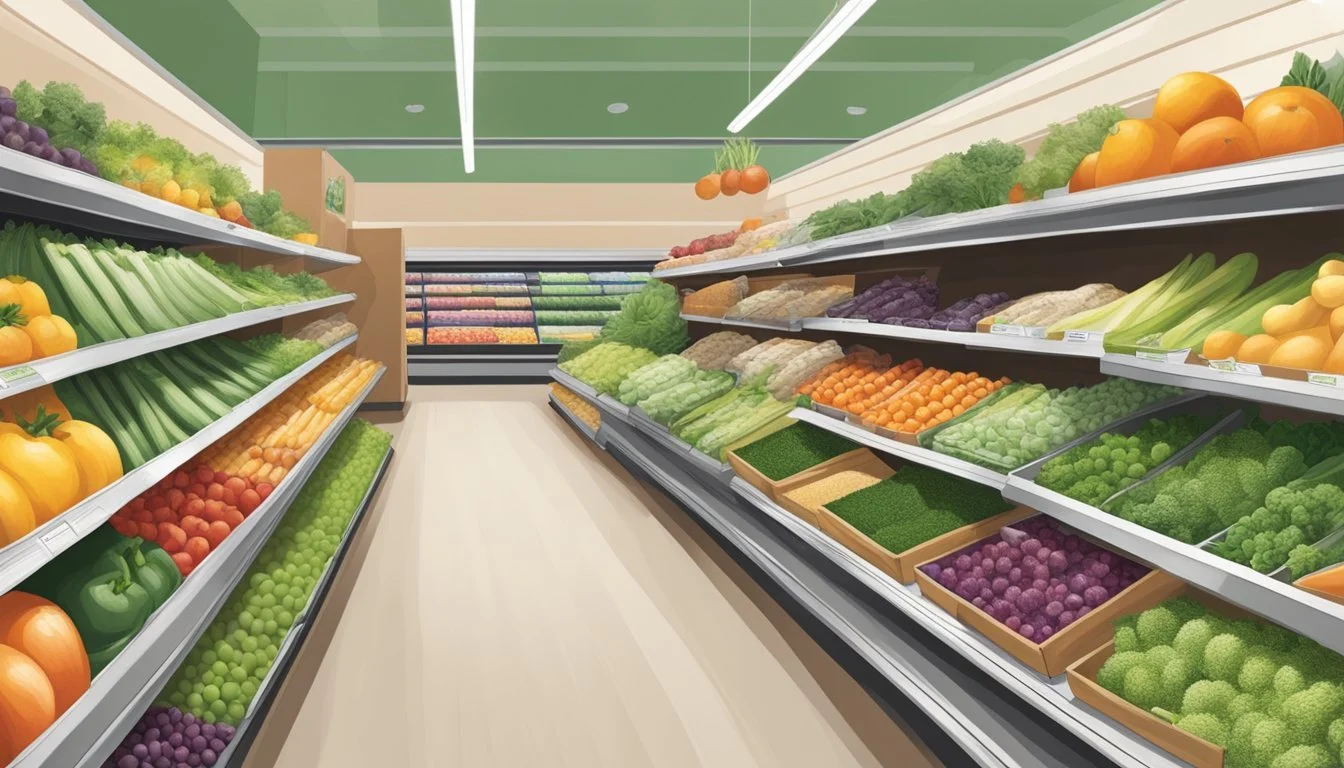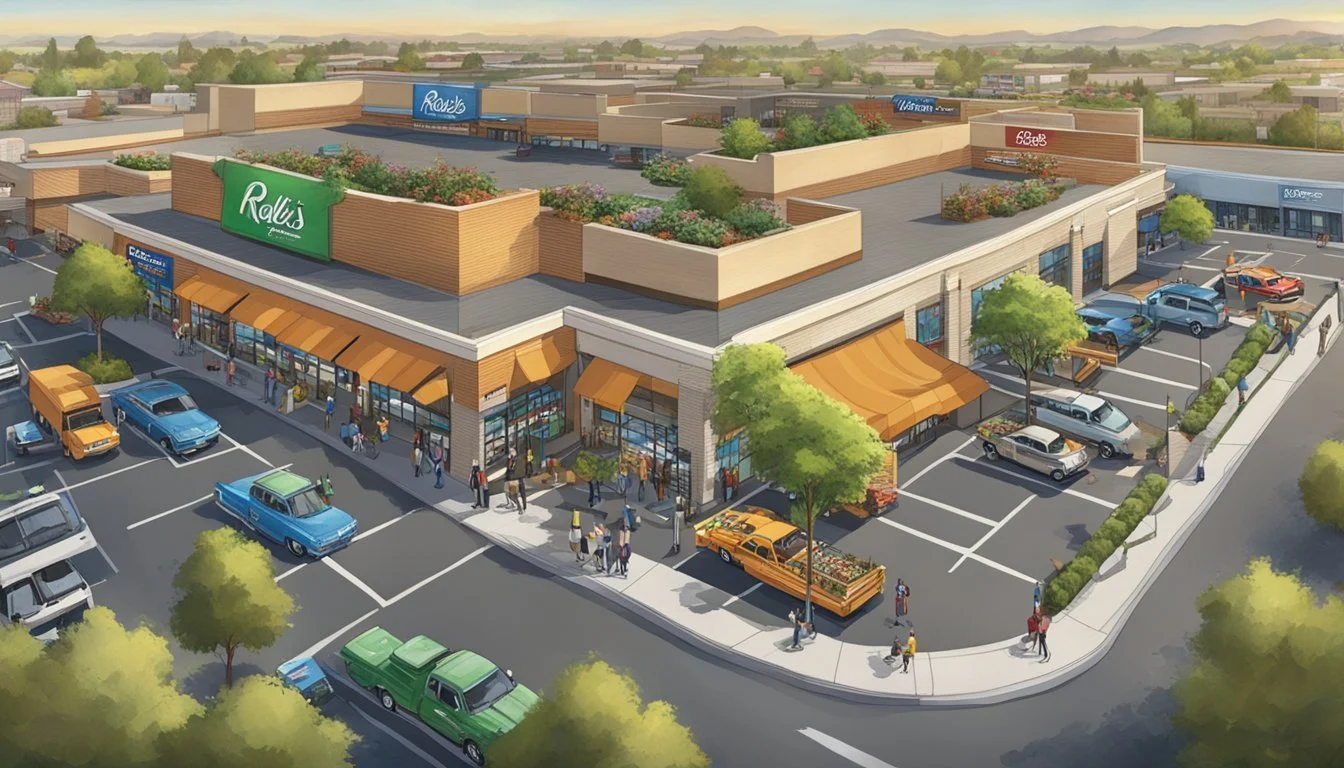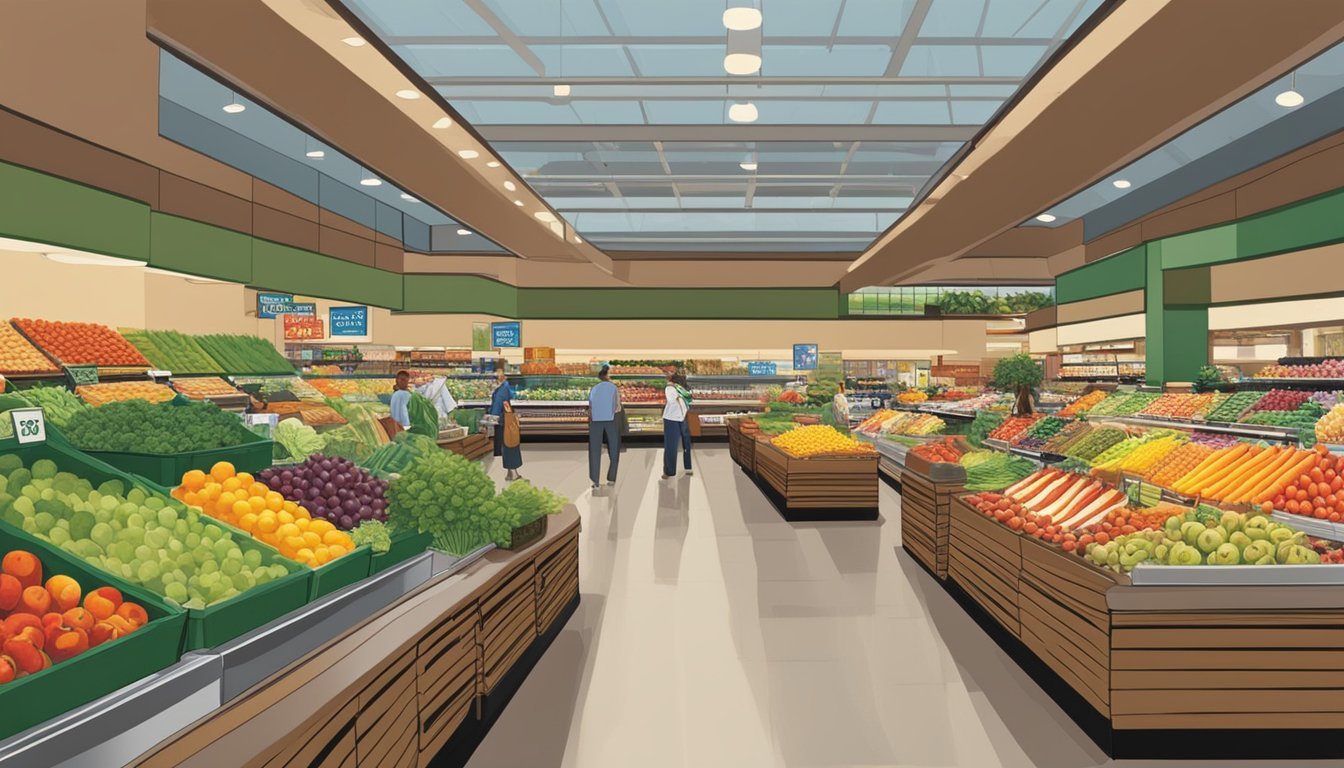Raley's vs Ralphs
A Comprehensive Comparison of Price, Quality, and Service
Raley's and Ralphs are two well-known grocery store chains that serve different regions of the United States. Raley's operates primarily in Northern California and Nevada, while Ralphs is a prominent supermarket chain in Southern California. Both stores aim to provide consumers with quality products and competitive prices.
When comparing Raley's and Ralphs, several factors come into play, including product selection, pricing, customer service, and store atmosphere. While both stores offer a wide range of groceries and household items, Raley's tends to focus more on fresh, locally-sourced produce and specialty items, whereas Ralphs is known for its broader selection and potentially lower prices on everyday essentials.
Ultimately, the choice between Raley's and Ralphs often comes down to personal preference and location. Consumers may find that one store better suits their needs based on proximity, specific product offerings, or overall shopping experience.
Historical Overview and Brand Presence
Raley's and Ralphs have rich histories spanning decades in the American grocery landscape. Both companies have expanded their market presence through strategic growth and acquisitions, shaping the supermarket industry in their respective regions.
History of Raley's
Raley's was founded in 1935 by Thomas P. Raley in Placerville, California. The company started as a single store and gradually expanded throughout Northern California. In the 1950s, Raley's introduced innovations like in-store pharmacies and floral departments.
By the 1970s, Raley's had grown to become a major player in the Sacramento area. The company acquired Bel Air Markets in 1993, further solidifying its presence. In 2011, Raley's purchased Nob Hill Foods, expanding its reach into the San Francisco Bay Area.
Raley's has maintained its family-owned status throughout its history. The company has focused on customer service and quality products, earning a loyal following in its markets.
History of Ralphs
Ralphs has an even longer history, dating back to 1873 when George Albert Ralphs and his brother Walter opened their first store in Los Angeles. The company quickly gained popularity for its quality products and friendly service.
In the early 1900s, Ralphs pioneered the concept of self-service grocery stores, allowing customers to select their own items. This innovation revolutionized the industry and contributed to Ralphs' rapid growth.
Ralphs expanded throughout Southern California in the mid-20th century. The company went public in 1968 and continued its growth through mergers and acquisitions. In 1998, Ralphs became a subsidiary of Kroger, one of the largest supermarket chains in the United States.
Market Presence and Expansion
Raley's primarily operates in Northern California and Nevada. The company has expanded its brand portfolio to include Raley's, Bel Air, Nob Hill Foods, and Food Source. In recent years, Raley's has focused on health-conscious offerings and sustainability initiatives.
Ralphs, as part of Kroger, has a strong presence in Southern California. The company operates over 180 stores, primarily in urban and suburban areas. Ralphs has adapted to changing consumer preferences by offering organic products and enhancing its online ordering and delivery services.
Both chains face competition from national and regional supermarkets, as well as discount stores and online retailers. They continue to innovate and adapt to maintain their market positions in an increasingly competitive grocery landscape.
Store Layout and Shopping Experience
Raley's and Ralphs offer distinct shopping environments tailored to their customer bases. Both chains prioritize efficient layouts and cleanliness, but differences in aisle organization and checkout processes impact the overall consumer experience.
Navigating Raley's Aisles
Raley's stores typically feature wide, well-lit aisles with clear signage. The layout emphasizes fresh produce near the entrance, followed by a logical flow through dairy, meat, and packaged goods sections.
Raley's often includes specialty departments like artisanal bakeries and expanded organic sections. These areas are usually positioned along the store perimeter for easy access.
Product placement focuses on convenience, with complementary items grouped together. For example, pasta, sauces, and Italian cheeses might be found in close proximity.
Navigating Ralphs Aisles
Ralphs stores generally have a more compact layout compared to Raley's. Aisles are arranged in a grid pattern, with numbered signs to help shoppers locate specific products.
The produce section is typically located near the entrance, similar to Raley's. However, Ralphs often integrates its bakery and deli counters more centrally within the store layout.
Ralphs emphasizes efficiency in its layout, with high-traffic items like milk and bread strategically placed to encourage movement through the store.
Cleanliness and Store Maintenance
Both Raley's and Ralphs maintain high standards of cleanliness in their stores. Regular floor cleaning and shelf restocking are common practices.
Raley's often receives praise for its attention to detail in store upkeep. Spotless floors, well-organized shelves, and clean restrooms are frequently noted by customers.
Ralphs also prioritizes cleanliness but may face more challenges due to higher foot traffic in some locations. Staff members are typically visible throughout the store, addressing spills and maintaining order.
Checkout Efficiency
Raley's checkout process is known for its personalized service. Cashiers are often trained to engage with customers and offer assistance with bagging.
Self-checkout options are available at many Raley's locations, but the emphasis remains on staffed lanes for a more personal touch.
Ralphs typically offers a mix of traditional and self-checkout lanes. During peak hours, Ralphs may open more lanes to manage customer flow efficiently.
Wait times can vary at both chains depending on location and time of day. Ralphs' larger stores sometimes have more lanes available, potentially reducing wait times during busy periods.
Product Assortment and Quality
Raley's and Ralphs both offer a wide range of products, but differences exist in their quality and selection. Each store has strengths in particular departments that may appeal to different shoppers.
Meat and Dairy Quality
Raley's takes pride in its meat department, offering a selection of prime and choice cuts. They source from local farms when possible and provide grass-fed options. Their dairy section features regional brands alongside national ones.
Ralphs carries a standard selection of meats, with some stores offering prime cuts. Their dairy section is comprehensive, with a mix of national brands and store-brand alternatives at competitive prices.
Both stores maintain high standards for freshness, but Raley's often edges out Ralphs in terms of perceived quality and variety in these departments.
Produce Selection
Raley's emphasizes fresh, locally-sourced produce when available. They offer a robust organic section and seasonal fruits and vegetables. Their produce department is known for its cleanliness and well-maintained displays.
Ralphs provides a solid produce selection with a mix of conventional and organic options. While their organic offerings may not be as extensive as Raley's, they typically offer competitive prices on staple items.
Both stores strive to maintain freshness, but Raley's often receives higher marks for the overall quality and presentation of its produce.
Deli and Prepared Foods
Raley's deli counter offers a variety of sliced meats and cheeses, including some premium and specialty options. Their prepared foods section features hot and cold items, with an emphasis on healthier choices and fresh ingredients.
Ralphs provides a standard deli selection with sliced meats, cheeses, and prepared salads. Their hot food bars and ready-to-eat meals cater to convenience-seeking shoppers, offering a range of options from rotisserie chickens to pre-packaged sandwiches.
While both stores offer prepared foods, Raley's tends to focus more on gourmet and health-conscious options, whereas Ralphs prioritizes convenience and variety.
Bakery and Confectionery
Raley's bakery department is known for its artisanal breads, custom cakes, and high-quality pastries. They often use premium ingredients and offer a selection of specialty items alongside traditional baked goods.
Ralphs provides a mix of in-store baked items and pre-packaged goods. Their bakery offers staples like breads, cakes, and cookies, with some stores featuring expanded selections of specialty desserts.
Both stores cater to sweet tooths, but Raley's typically offers a more upscale selection with a focus on craftsmanship and unique flavors.
Pricing and Value for Money
Raley's and Ralphs employ different pricing strategies to attract customers. Both stores aim to provide value, but their approaches vary in terms of everyday prices, discount programs, and special offers.
Everyday Prices Comparison
Raley's tends to have slightly higher everyday prices compared to Ralphs. A typical shopping basket at Raley's may cost 5-10% more than at Ralphs for similar items. This price difference is most noticeable on national brand products and fresh produce.
Ralphs often beats Raley's on prices for generic staples like milk, bread, and eggs. Their store brand offerings are usually priced 10-15% below comparable items at Raley's.
Discounts and Savings Programs
Raley's Something Extra rewards program offers personalized deals and fuel points. Members can save up to $5-10 per week on targeted offers.
Ralphs provides digital coupons through their app and website. Their rewards program includes fuel points and special member pricing on select items each week.
Both stores run weekly sales, but Ralphs typically has a larger number of discounted items.
Price Winners and Loss Leaders
Ralphs often uses aggressive pricing on popular items as loss leaders. They frequently offer deals on soda, cereal, and cleaning products to draw customers in.
Raley's competes by focusing on quality and local products. They may have better prices on specialty items and regional brands.
Both stores match prices with major competitors, including Amazon Prime discounts on select items at Whole Foods.
Customer Service and Support
Raley's and Ralphs prioritize customer satisfaction through their service offerings. Both chains strive to provide assistance and support to shoppers, though their approaches may differ slightly.
Employee Knowledge and Friendliness
Raley's employees often receive praise for their product knowledge and helpful attitudes. Staff members undergo training to familiarize themselves with store layouts and inventory. This enables them to quickly direct customers to specific items or suggest alternatives.
Ralphs also emphasizes employee training, focusing on courteous interactions. Their staff aims to greet customers warmly and offer assistance unprompted. Both chains encourage employees to build rapport with regular shoppers, fostering a sense of community.
Customer ratings frequently mention friendly encounters at both stores. However, individual experiences can vary depending on location and staff turnover rates.
Availability of Assistance
Raley's typically stations employees throughout the store to provide immediate help. They often have dedicated service counters for specific departments like deli and bakery.
Ralphs utilizes a similar approach, with staff members available in various sections. They also offer customer service desks near the front of stores for returns, exchanges, and general inquiries.
Both chains provide phone support for questions about products, services, and online orders. Ralphs offers a toll-free number (1-800-576-4377) for gift card inquiries. Raley's provides multiple contact options through their website for different types of support.
Health and Sustainability Initiatives
Raley's and Ralphs both prioritize health-conscious offerings and environmental responsibility. Their initiatives aim to provide customers with nutritious options while minimizing ecological impact.
Nutritional Information Accessibility
Raley's displays clear nutritional information on product labels and shelf tags. Their mobile app allows customers to scan barcodes for detailed nutritional facts. The store offers a "Better for You" product line, highlighting items with reduced sodium, sugar, and artificial ingredients.
Ralphs utilizes a color-coded system on shelf tags to indicate nutritional value. Green labels signify the healthiest choices, while yellow and red denote less nutritious options. The Kroger-owned chain provides online nutritional information for most products, accessible through their website and mobile app.
Eco-Friendly Practices
Raley's has implemented energy-efficient lighting and refrigeration systems in their stores. They prioritize locally-sourced produce to reduce transportation emissions. The company has also launched initiatives to minimize food waste, donating unsold perishables to local food banks.
Ralphs focuses on reducing plastic waste through reusable bag programs and recycling initiatives. They have installed solar panels on select store rooftops to generate clean energy. The chain has committed to phasing out single-use plastic bags in all stores by 2025.
Both retailers offer organic produce sections, featuring fruits and vegetables grown without synthetic pesticides or growth hormones. They also stock antibiotic-free meat options to cater to health-conscious consumers.
Convenience and Accessibility
Raley's and Ralphs offer different levels of convenience and accessibility to shoppers. Their store locations, operating hours, parking situations, in-store layouts, and digital services impact the overall shopping experience.
Store Locations and Hours
Raley's operates primarily in Northern California and Nevada, with over 120 stores. Most Raley's locations are open daily from 6 AM to 11 PM, providing ample time for shopping.
Ralphs has a larger footprint, with over 180 stores across Southern California. Ralphs stores typically open at 5 AM and close at midnight or later, giving customers extended hours for their grocery needs.
The wider distribution of Ralphs stores may offer greater accessibility for many Southern California residents. However, Raley's concentrated presence in Northern California can be advantageous for local shoppers.
Parking and In-Store Navigation
Raley's stores often feature spacious parking lots, making it convenient for families to park and unload groceries. Inside, Raley's adopts a logical layout with wide aisles and clear signage.
Ralphs stores vary in size and layout, but generally offer adequate parking. Some urban locations may have limited parking options. Ralphs stores typically have a familiar layout, with produce near the entrance and staples along the perimeter.
Both chains prioritize customer-friendly navigation, but Raley's tends to receive praise for its less crowded feel and ease of movement throughout the store.
Grocery Delivery and Pick-Up Options
Raley's offers eCart, its online ordering system for delivery and pickup. Customers can schedule same-day pickup at most locations or opt for home delivery within designated areas.
Ralphs provides delivery through Instacart and its own Ralphs Delivery service. They also offer Pickup, allowing customers to order online and collect groceries without entering the store.
Both chains have invested in their digital platforms to enhance convenience. Ralphs may have a slight edge in delivery coverage due to its partnership with Instacart, while Raley's eCart system is known for its user-friendly interface.
Reputation and Customer Loyalty
Raley's and Ralphs have cultivated distinct reputations and customer loyalty strategies. Their approaches to brand trust, customer feedback, and rewards programs shape how shoppers perceive and engage with each chain.
Brand Trust and Customer Reviews
Raley's has built a strong regional reputation in Northern California and Nevada. Customers often praise its focus on quality products and community involvement. A recent Consumer Reports survey ranked Raley's highly for its produce selection and store cleanliness.
Ralphs, part of the Kroger family, benefits from wider brand recognition. It consistently receives positive reviews for competitive pricing and product variety. However, some shoppers report mixed experiences with customer service compared to smaller chains.
Both stores outperform larger competitors like Walmart and Target in taste tests for store-brand items. Safeway, another major player, typically falls between Raley's and Ralphs in customer satisfaction ratings.
Loyalty Programs and Rewards
Raley's "Something Extra" program uses transactional data to personalize offers. Members receive tailored discounts based on purchasing patterns. The chain segments customers by price sensitivity and shopping frequency to enhance engagement.
Ralphs' loyalty program, tied to the broader Kroger network, offers fuel points and digital coupons. Its extensive data collection allows for targeted promotions across a wider range of products.
Both programs have high participation rates. Shopper feedback indicates Raley's excels in creating a personalized experience, while Ralphs provides more diverse reward options. The effectiveness of these loyalty strategies plays a crucial role in retaining customers in the competitive grocery market.
Comparison Summary and Recommendations
Raley's and Ralphs both offer quality grocery options, but they cater to different customer needs. Raley's focuses on premium products and a more upscale shopping experience. Ralphs provides a wider range of budget-friendly options.
Price-conscious shoppers may prefer Ralphs. Their store brand products can be up to 50% cheaper than national brands at other stores. Ralphs also tends to have slightly lower prices on staple items like milk, bread, and produce.
For those prioritizing quality and selection, Raley's is a strong choice. They excel in offering fresh, locally-sourced produce and high-end specialty items. Their stores often feature in-house bakeries and delis with gourmet options.
Service quality can vary by location for both chains. However, Raley's generally emphasizes customer service as part of their premium experience. Ralphs maintains a solid service standard across their stores.
Recommendations:
Budget shoppers: Choose Ralphs for everyday savings
Quality seekers: Opt for Raley's, especially for fresh produce and specialty items
Balanced approach: Shop at Ralphs for staples, visit Raley's for select premium products
Ultimately, the best choice depends on individual preferences for price, quality, and shopping experience. Comparing weekly ads can help maximize savings at either store.









